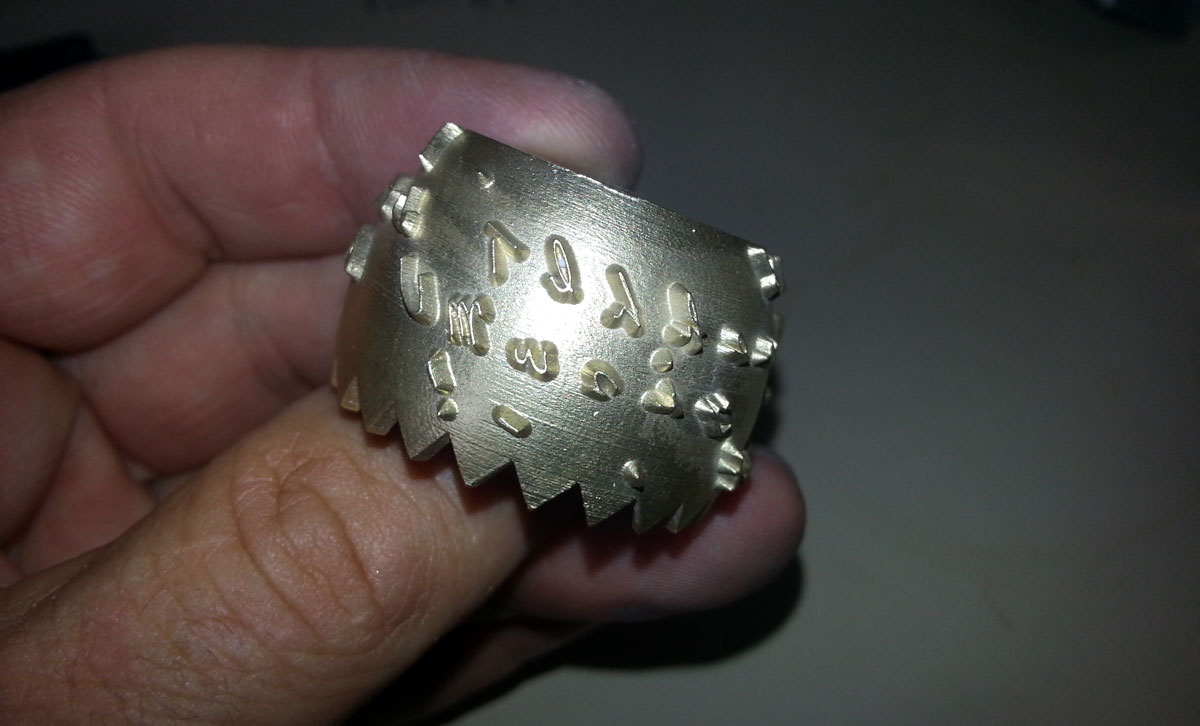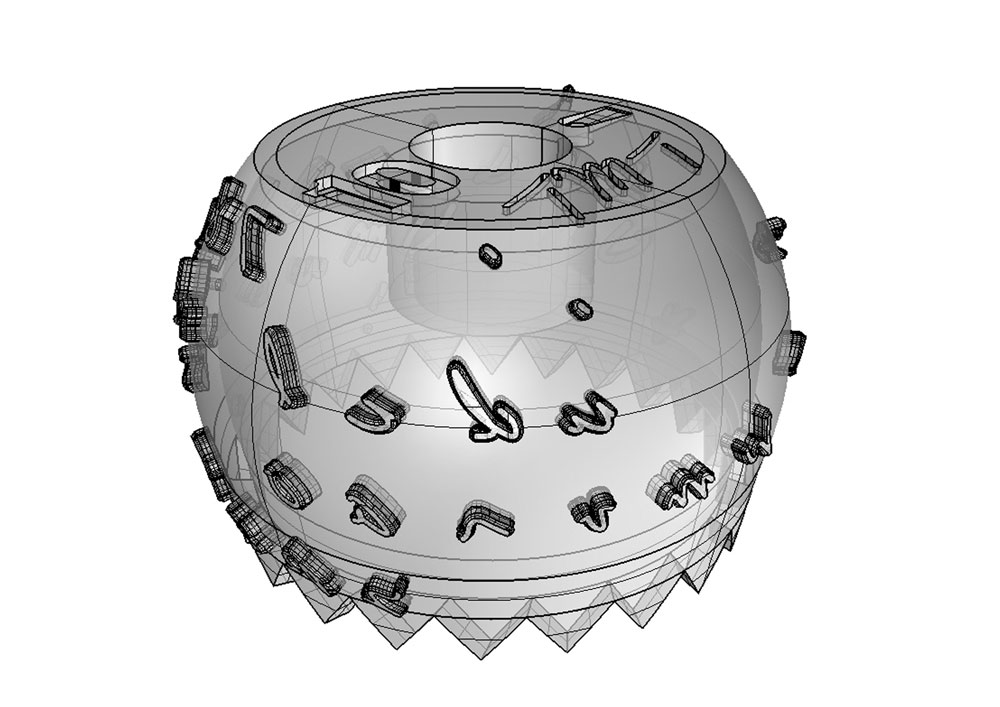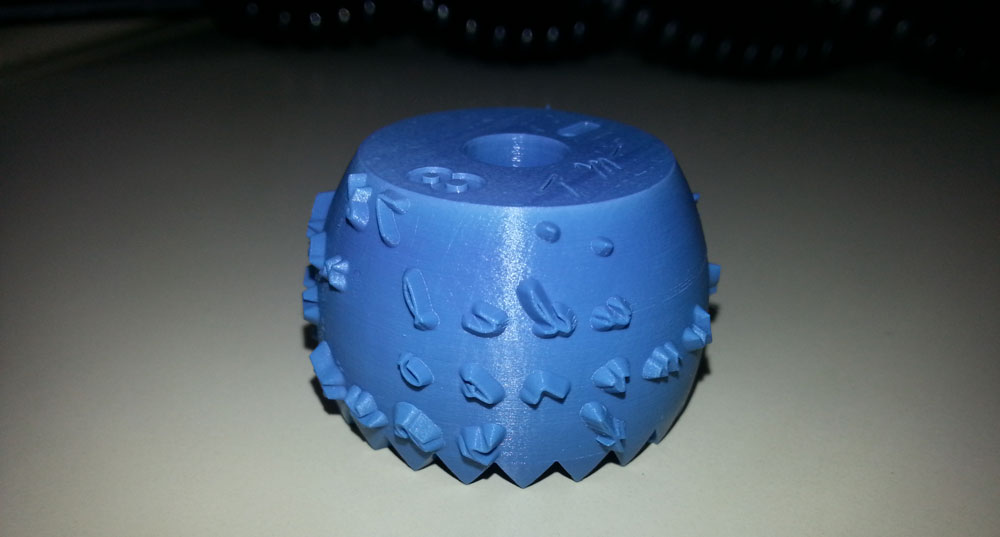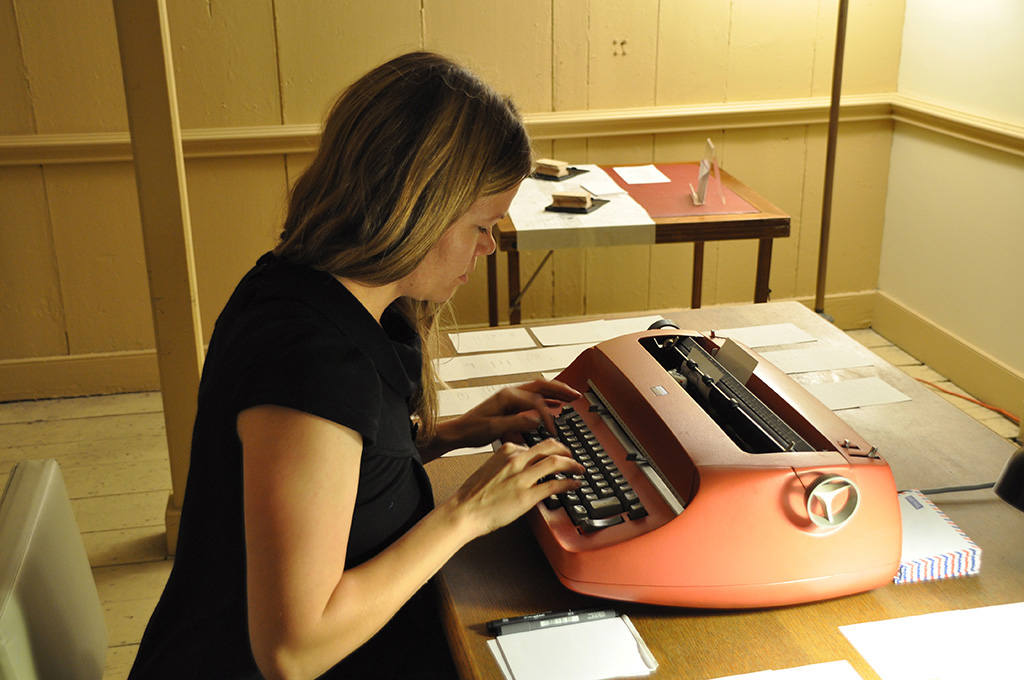A few weeks ago, as I was looking for images of beautiful 3D printed objects and designs on Flickr, some particularly impressed me. Many of them were by Scottish 3D design firm Dot San, so I contacted Vijay, one of the founders. The firm has a particular ability in creating, both digitally and physically, original and intricate designs, some of which have risen to global recognition.
The latest addition to this collection of artistic masterpieces is probably going to be the one developed together with Canadian visual artist Ehryn Torrell: a 3D printed type ball for a 1960 IBM Selectric Typewriter for her “The Occurrence of You and Me” exhibition.
The real challenge – and the real spirit of this work – did not just lie in reverse engineering a cult object from the past. The work, titled “My Mother’s Alphabet” sought to also bring back beautiful personal memories by customizing the type ball with letters written in Torrell’s mother’s handwriting.
This project presented some high complexities from a design point of view, especially in relation to the need for turning such a complex design into a real, functional object. To do this Dot San coordinated and collaborated with three different 3D printing experts: UK based Digits2Widgets and Toronto based 3D Phaktory, and then, subsequently, another UK firm, MicroMetalsmiths, for investment casting of the 3D printed model.
After the conceptual idea was put forward by Torrell, Dot San tackled the design challenges, which included reverse engineering an existing Selectric type ball and understanding the location and design of each letter, uniquely affecting the print quality. Further, the 3D printing process itself was pushed to its limits as Dot San and Torrell worked together through 11 prototypes to gain functionality, durability and maximum print quality.
A number of the iterations of the design were developed using Rhino 3D and 3D printed by the two 3D printing specialists in Digital ABS. A final prototype was then 3D printed in high resolution wax by Micro Metalsmiths, who then cast the part in brass using traditional investment cast methods.
The final result proved both beautiful and functional. Torrell was able to perform with the type ball at Nocture Halifax, a late-night contemporary art event in Canada, where she sat for six hours at the typewriter, searching for legible words that looked convincingly like her mother’s handwriting. The artist reported enjoying working with Vijay on the creative process very much.
“Working with Dot San has been great. Vijay seemed ready for this project and its particular challenges and obstacles, but neither of us could have predicted how exciting and maddening it would be,” she said. “It took IBM 7 years to manufacture this part for the Selectric typewriter, and we were trying to understand the complexities of the object with very different eyes, skills, materials and production methods.
“We developed a great Skype symbiosis – Torrell added – due to the rigorous demands of the project. Due to the shape of the object and [the] characteristics of nylon as a printed material, Vijay would have to find creative solutions to thicken the lines of the letter without significantly altering their character. He is a patient, thoughtful, inventive and very generous.”
3D Printing is only the final part of a creative process that starts with the artist’s idea, passes through the designer’s talent and is then made physical through a machine. The ability to combine so many different skills in one project is the biggest skill of all, and that is exactly what 3D creativity is all about.







